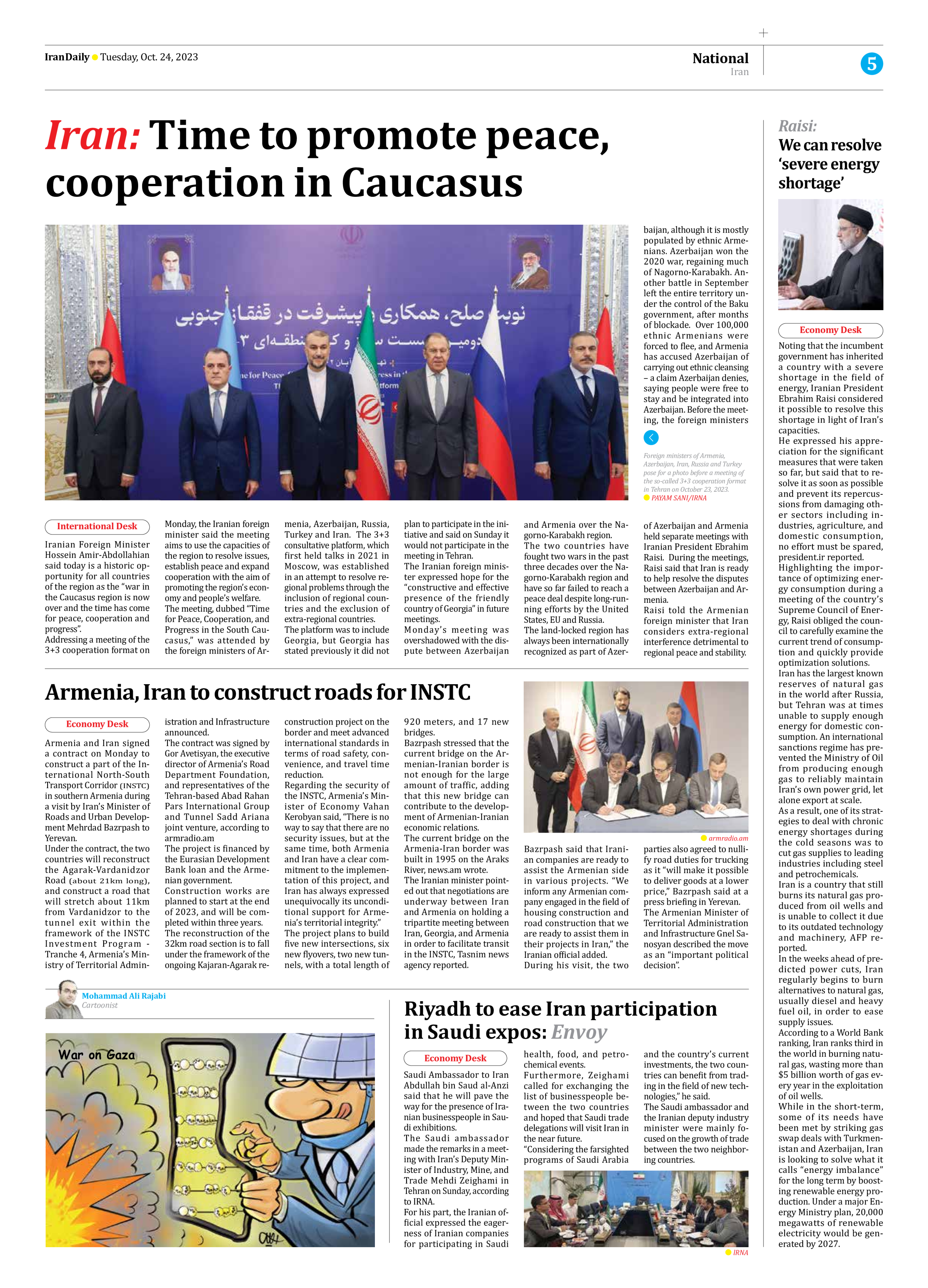
Raisi: We can resolve ‘severe energy shortage’
Noting that the incumbent government has inherited a country with a severe shortage in the field of energy, Iranian President Ebrahim Raisi considered it possible to resolve this shortage in light of Iran’s capacities.
He expressed his appreciation for the significant measures that were taken so far, but said that to resolve it as soon as possible and prevent its repercussions from damaging other sectors including industries, agriculture, and domestic consumption, no effort must be spared, president.ir reported.
Highlighting the importance of optimizing energy consumption during a meeting of the country’s Supreme Council of Energy, Raisi obliged the council to carefully examine the current trend of consumption and quickly provide optimization solutions.
Iran has the largest known reserves of natural gas in the world after Russia, but Tehran was at times unable to supply enough energy for domestic consumption. An international sanctions regime has prevented the Ministry of Oil from producing enough gas to reliably maintain Iran’s own power grid, let alone export at scale.
As a result, one of its strategies to deal with chronic energy shortages during the cold seasons was to cut gas supplies to leading industries including steel and petrochemicals.
Iran is a country that still burns its natural gas produced from oil wells and is unable to collect it due to its outdated technology and machinery, AFP reported.
In the weeks ahead of predicted power cuts, Iran regularly begins to burn alternatives to natural gas, usually diesel and heavy fuel oil, in order to ease supply issues.
According to a World Bank ranking, Iran ranks third in the world in burning natural gas, wasting more than $5 billion worth of gas every year in the exploitation of oil wells.
While in the short-term, some of its needs have been met by striking gas swap deals with Turkmenistan and Azerbaijan, Iran is looking to solve what it calls “energy imbalance” for the long term by boosting renewable energy production. Under a major Energy Ministry plan, 20,000 megawatts of renewable electricity would be generated by 2027.







